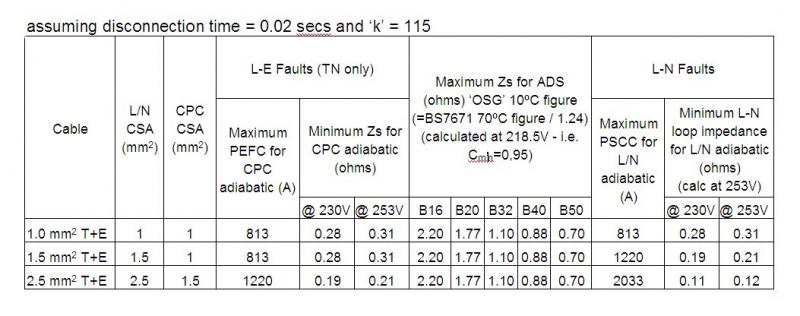As I implied, that's what I suspected.Of course the suggested plasma forms within the MCB!
In that case, it has nothing to do with what interests us - namely the process going on in a CPC during fault conditions which I still think is (when t<0.01s) going to be just about as close as one can get in practice to a perfectly adiabatic process (very little heat is going to have a chance to move from the conductor is such a short period of time).
As I've said, the only problem with undertaking an adiabatic calculation (for the CPC) with these very small disconnection times is finding the appropriate value of I²t to use for the calculation.
Kind Regards, John


